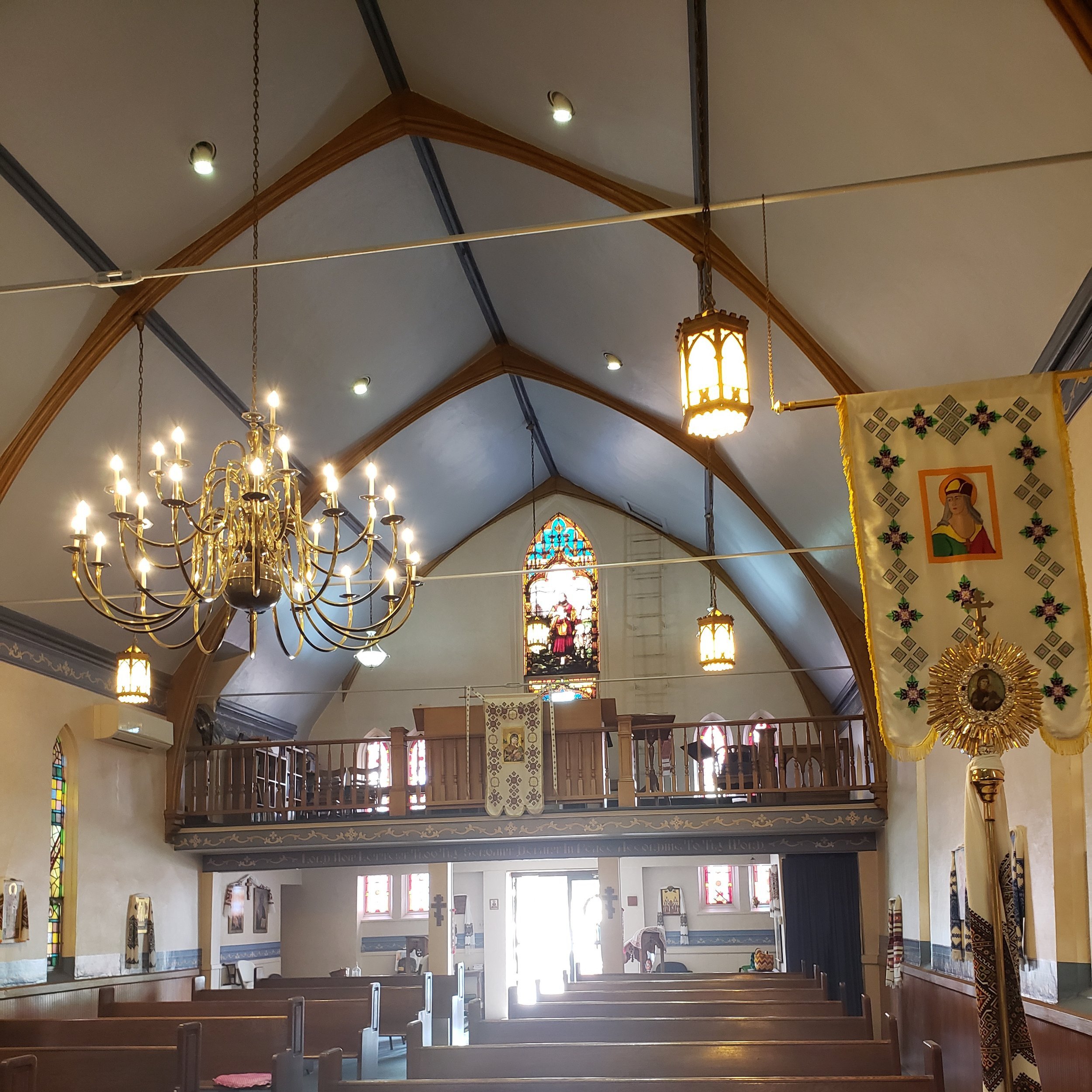St. Vladimir Ukrainian Orthodox Church
73 South 18th Street, Pittsburgh, PA 15203
10 am - 4 pm
Wheelchair Accessible Entrance: NO
Wheelchair Accessible Restrooms: NO
Public Restrooms: YES
Photography Allowed: YES
YOUR EXPERIENCE
The building was originally constructed for an Episcopalian congregation and some of the elements of the church still reflect that time. For example, the ark shaped building, stained glass windows, choir loft, etc. are less common in the Orthodox churches. However, much of the interior has been modified overtime to reflect Orthodox traditions. The church is divided into two main sections: the nave, or large open section where the congregation worships and the sanctuary, where the priest and any altar servers lead the service. The sections are separated by a large screen with icons on it, called the iconostas. The doors to the altar area will be open, however guests are asked to look in through the doors from the nave, and not to go through the doors into the altar area.
Highlighted items:
-In the sanctuary, you can see the main altar, as well as a small table on which the bread and wine for Communion are prepared. When an Orthodox altar is consecrated, relics from one of the saints are sealed inside it. Our parish is very blessed to have the relics of St. John the Evangelist in our altar.
-To the left in front of the iconostas, you will find a small box with relics of two saints from the land of Ukraine- St. Mark the Cave Dweller and St. Job of Pochaiv.
-A cloth with an icon depicting Christ's body after being removed from the Cross is laid on a table in the front left of the church. This cloth is carried in several processions that are made as part of the services during Holy Week.
-Icons are hung throughout the church in addition to those on the iconostas. These have been painted by parishioners and others and added throughout the years. In the Orthodox Church, icons are referred to as "windows to Heaven." We do not worship the wood and other materials used to create them. In venerating them, we are reminded of the saints and events depicted on them, similar to the idea of traveling with a picture of family or a loved one.
-While Orthodox churches from various ethnic backgrounds share a common faith and dogma, there are smaller cultural traditions that are part of the experience. For example, embroidered cloths called rushnyks, are often found in Ukrainian Orthodox Churches. They show the special place that various items hold in the church and can be found on icons, the altar stand, and more.
ABOUT THIS BUILDING
St. Vladimir Ukrainian Orthodox Church was organized in 1926. Members who emigrated from the Carpathian mountains of eastern Europe in the late 19th and early 20th centuries previously had to worship at non-Orthodox churches. The Temple, Parish House, and Hall were all purchased from St. Mark's Episcopal Church and several projects were completed to make the interior closer to the design of an Orthodox temple, including the construction of an iconostasis by parish members. During the depression, the Hall was sold to save the Temple and rectory from sheriff's sale. In 1936, funds were secured to remodel the exterior of the Church. In 1946, the Hall was repurchased. Many immigrants and refugees who came to Pittsburgh from Europe in 1949 and 1950 were housed in the Parish Hall, and provided with food and clothing. In 1958, construction of a new Parish Hall began. In 1959, St. Olga’s Sisterhood began making and selling pierogis to help ease the financial burden and this ministry continues to this day. In 2006, the Church interior was renovated. The parish continues to carry on the Ukrainian cultural heritage while its make-up now includes and welcomes anyone interested in worshiping in the Orthodox tradition.

